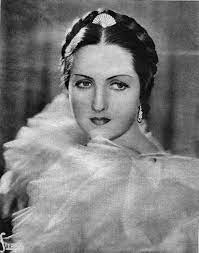Do you know that the film technique has been born for 30 years? Every decade (every 10 years) there was a transformation that created a film world. It is worth remembering:
1876
We assume that the history of film technique, i.e. displaying movement from static images (animation) begins in 1876 with the appearance of the invention of French Emile Reynaud in the form of a toy for watching animation. The improved idea of ??Emile was two designs of film tape and a projector in the form already known as Camera Obscura (the year 1550 lens in the darkroom chamber). The tape had the form of glass plates connected together with the help of fabric with handpainted pictures. The perforation placed on its edge was used to move the tape (concept from 1879). The light penetrating the glass plate upside down was transferred to the enlarged image from the tile to the screen with the lens. The operator of this device in a darkened place could show pictures on a any (optimal) speed for a larger group of viewers at large screen. This can be considered the first movable image shows from the “film” tape (cinema).
1887
From the scientific discovery in 1777, silver chloride, darkening, under the influence of light, worked on materials and chemical photosensitive compounds. In 1887, Hanibal Goodwin discovered the usefulness of nitroceluloid tape as a substrate for photosensitive layers. A year later, George Eastman and William Walker developed and patented a cellulose photographic membrane with photosensitive material, which could be rolled into rolls. In 1891, Thomas Alva Edison developed an optimal standard of 35mm photographic membrane width with edge perforation – 4 holes per cage. Fortunately, Edison failed to patent this solution that became public. This was immediately used as a universal standard of photosensitive image carrier in constructing cameras recording the moving image and to play the image recorded on another device. The started era of improving two separate film devices of the camera and projectors with the previously improved lens optics.
1895
In 1892, the Lumiere brothers imroved the personnel projector called Phantoscope of the idea of Armat and Jenkins working for Edison, by introducing an ankle of the perforated film membrane to achieve the best sharpness and smoothness of the moving image played. The device reproduced 16 image frames per second, allowing smooth displaying a movable image (with some imperfections). A modified film project for a public presentation of a wider audience was created only a few years later in 1895. It was called a cinematographer and is known for its short film showing “The Output of Workers from The Factory” showing the possibility of then movie technology. From then on, the era of a public cinema in the character we know.
Somewhere along the way of the history of film technique, the figure of the Polish designer Kazimierz Proszynski appears. However, the Polish muse, storing the achievements of the Polish engineer, did not confirm their pioneering authenticity (pleograph). Nobody wanted to talk about it, probably hiding the propaganda myth.
From 1911, the started first public movie projections in Poland. We can already talk about the cinema business in Poland.
In 1912, the first amateur movie production company in Lviv was launched in Poland.
At the same time, in the same year, more film production company are created, and one of them Sfinks (Sphinx) Aleksander Hertz in Warsaw will become the largest movie company of the pre-war period.
The first movies of Polish production (There was no Polish state. Poland was occupied by three countries):
1902 – Powrot Birbania
1911 – Casydka i Odstepca
1912 – Sad Bozy
1912 – Wojewoda
1912 – Krwawa dola
1912 – Zesmta za grobu
1914 – Niewolnicy zmyslow
The movies that was produced in Poland during the First World War:
1916 – Ochrona warszawska i jej tajemnice
1916 – Car i jego sluzby
1919 – Carska Faworyta
At that time, Polish movie stars were born:
Pola Negri (Apolonia Chalupiec)
Jadwiga Samosarska


An outstanding director:
Michal Waszynski creator 20% of all Polish movies of the first period until World War II.

In the time of the occupation partitions, Polish film creations were struggling with a lack of funds and tsarist censorship and in the interwar period of independence with the censorship of the Catholic press criticizing film ethics.
After the start of the Second World War, the Germans stole film and photographic equipment in Poland. Most cinemas were converted into shelters for people without homes. The most famous cinemas were left as entertainment for the Germans. In these cinemas, Polish films were torn out, at least many film copies in the planned extermination of Polish culture were destroyed. However, a underground film appeared, which, although forbidden in a very limited form, recorded a documentary life in a occupied country. (Brux)
…………………
BRUXnews
RSS subscription: https://brux.news.blog/feed/
Editor contact: BRUX.editor@outlook.com